THIS ARTICLE/PRESS RELEASE IS PAID FOR AND PRESENTED BY NTNU Norwegian University of Science and Technology - read more

Ladybirds: The insects almost everyone likes
Ladybird beetles are probably among the most popular insects we have. Did you know that Norway has some 50 different species – plus some unwelcome guests?
Flies, wasps and mosquitoes struggle with their image, and you rarely meet people who whoop excitedly or start smiling when they see one. But have you ever met anyone who doesn’t like ladybirds?
Ladybirds belong to our most famous and beloved insects. Everyone has a relationship with them, says Frode Ødegaard, an associate professor in the Department of Natural History at the NTNU University Museum.

Ladybirds probably only compete with butterflies and bees for human favour. They also play a central role in nature.
“Ladybirds are ecologically important in regulating pest populations, and their uses include biological control in greenhouses,” says Ødegaard.
Now you can easily find out more about them — because while the texts may be in Norwegian, the pictures are universal and the Latin names are the same no matter what language you speak.
Collected all the country’s ladybirds
For the past year, Ødegaard has worked with photographer and chief engineer Arnstein Staverløkk at the Norwegian Institute for Nature Research (NINA).
“We’ve created websites for all the Norwegian species of ladybirds,” says Ødegaard. They collaborated with the Norwegian Biodiversity Information Centre.
Actually, ladybirds are beetles, and not all beetles awaken the same degree of enthusiasm, either. But the beauty of many ladybird species probably helps them overcome their beetle designation.
“In Norway, we have 56 different species of ladybirds that are native here. Most of them are easy to recognize with their round bodies and colourful and spotted patterns, but some are small and inconspicuous,” says Ødegaard.
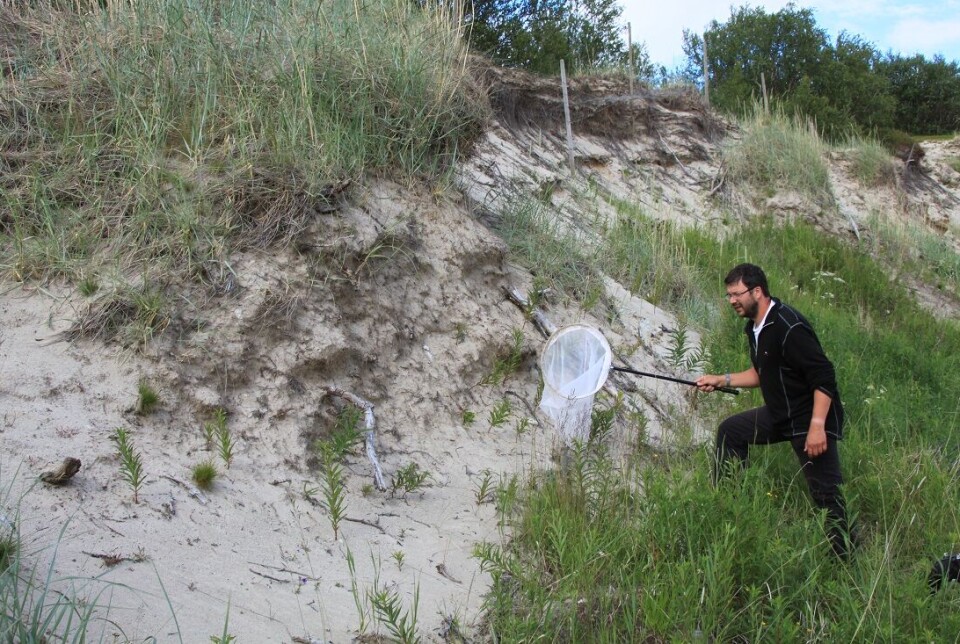
Anywhere from 2 to 24 spots
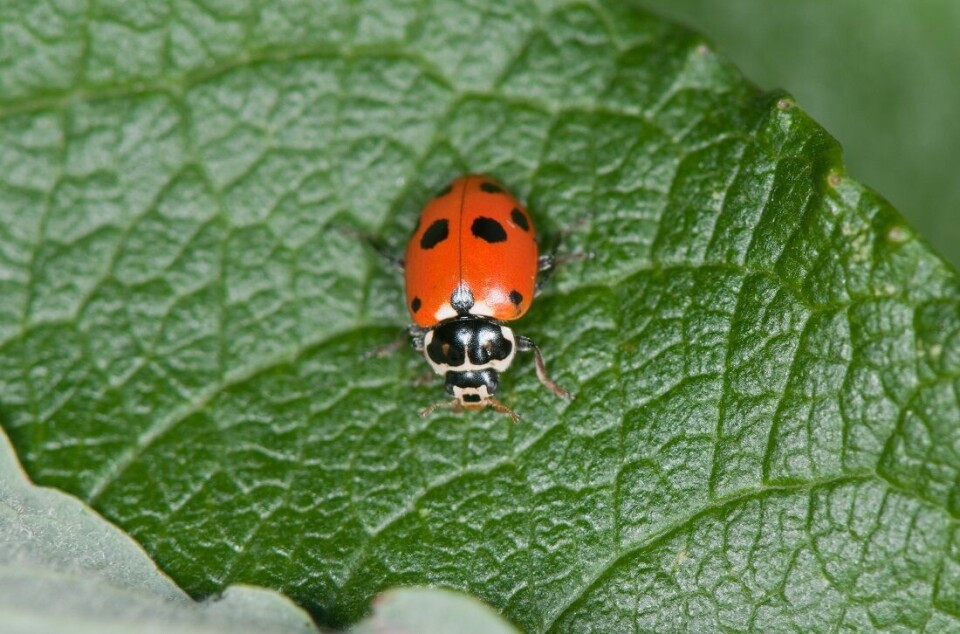
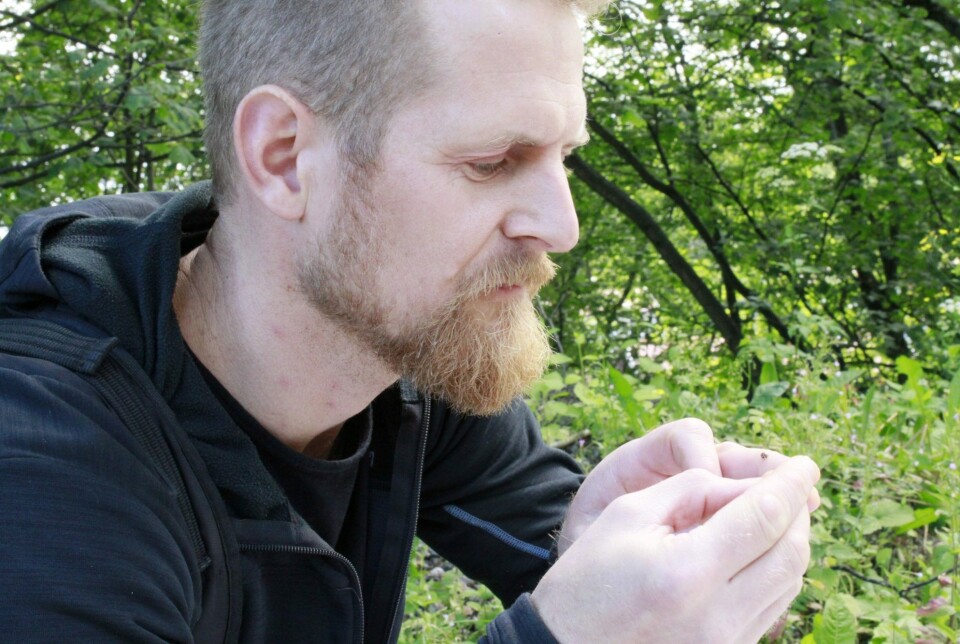
You’ll find a lot of variation among ladybirds, and there’s no guarantee that you would recognize them all as ladybirds either. But one characteristic feature often recurs.
“Most ladybirds have a dot pattern. There are 2, 4, 5, 7, 10, 11, 12, 13, 14, 16, 18, 19, 20, 22 and 24-spot ladybirds. And, no, the number of dots has nothing to do with age,” says Ødegaard.
The number of dots is just one of several myths associated with ladybirds. Ladybirds also have an important place in legends and folk beliefs. They are symbols of both fertility and happiness, and have been seen as a gift from God to stifle aphids.
Not a bad mythology for a group of insects that use chemical warfare against their enemies. The ladybirds protect themselves against attack by secreting venom from their knees. Charming, no?
Alien species not welcome
Norway has numerous different species of ladybirds. In fact, maybe a few too many.
“In addition to our own species, we have some invasive alien species that don’t belong here,” says Ødegaard.
These alien species have come to the country as stowaways, for example through foreign imports of fruits and vegetables, newly introduced garden plants and timber.
The guests are not welcome for several reasons. Several of the invasive aliens can outcompete native ladybird species, both by eating their larvae and their prey. They can also gobble up fruit crops and leave a bad taste behind, so that the fruit is destroyed.
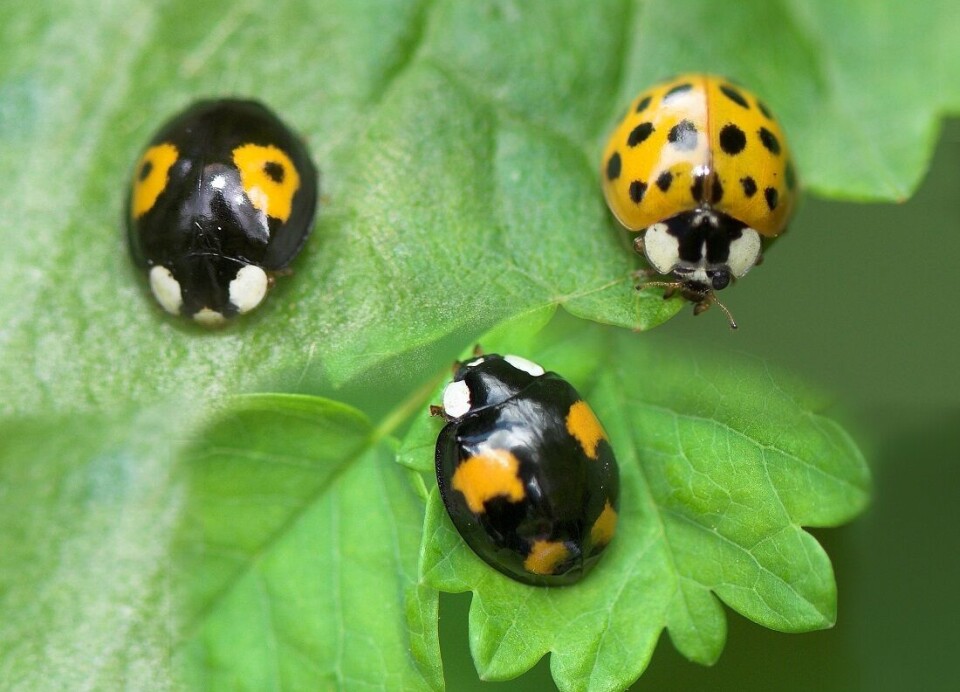
“One of these undesirable species is the harlequin ladybird. It established itself in Norway after coming to the country as a stowaway. The species can eat other ladybirds and destroy crops,” says Ødegaard.
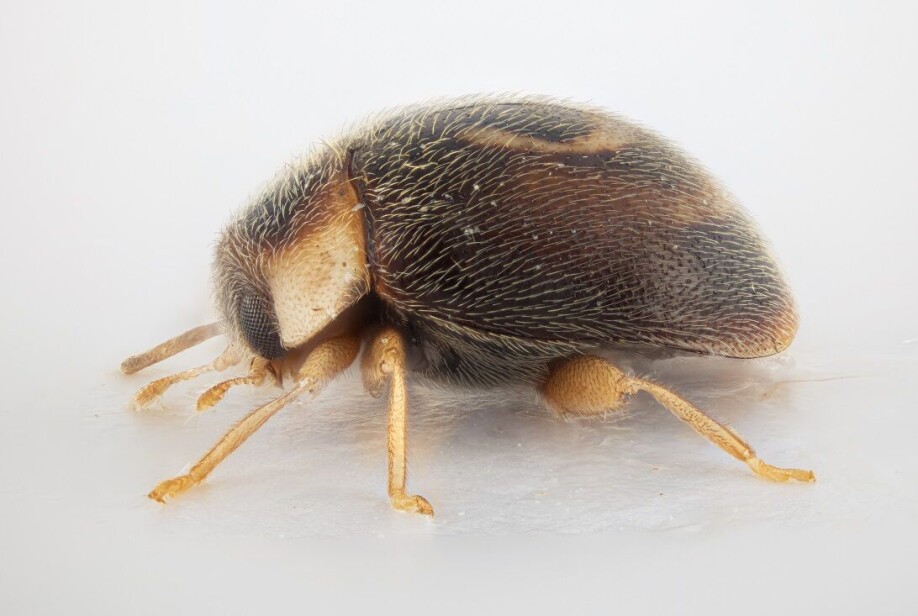
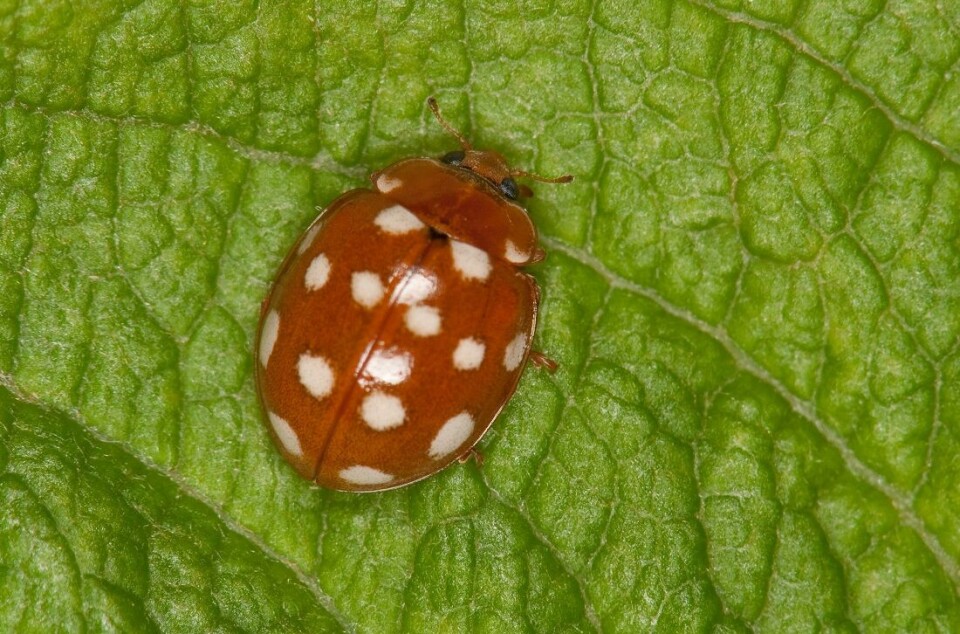
Clitostethus arcuatus, called eføymarihøne in Norwegian, is the other alien species that is known to have become resident and reproduce in Norway. In addition, several other species have come to the country but haven’t managed to become a permanent part of the Norwegian fauna because they aren’t able to cope with the conditions here.
Humans destroying ladybird habitat
Although ladybirds are generally popular, human activity threatenes several species.
“Eleven species of ladybirds are red-listed in Norway, mainly because their habitats are being destroyed,” says Ødegaard.
The Norwegian Red List for Species is the Biodiversity Information Centre’s overview of species that are in danger of becoming extinct in Norway. The intergovernmental nature panel IPBES considers land-use change the main threat to the diversity of species on our planet, and this also applies to ladybirds.
“The main reason for the decline of the endangered ladybirds is the reduction of hot and dry open field areas, like sandy beaches and unfertilized terrain,” says Ødegaard.
Old-growth forests and flower meadows disappear in favour of housing, business and road development, changed agriculture and forestry. The well-kept young forest with few species of trees does not provide the same foundation for insect diversity as the old forest does.
If you want to know more about this and other topics related to ladybirds, you would do well to take a look at the Norwegian Biodiversity Information Centre’s new website all about them.
See more content from NTNU:
-
Politics on Facebook: Populist parties choose divisive issues on purpose
-
Social media is connected to cyberbullying – but not how we thought
-
Forskere ved NTNU får nesten 24 millioner av EU for å lage nye strømomformere
-
This helps the youngest children enjoy school more
-
Can we tap the ocean’s power to capture carbon?
-
Researchers have uncovered major problems in Norway's salmon industry





































